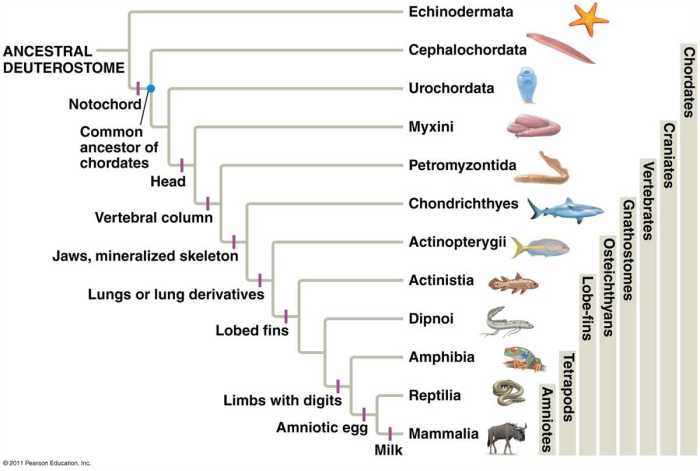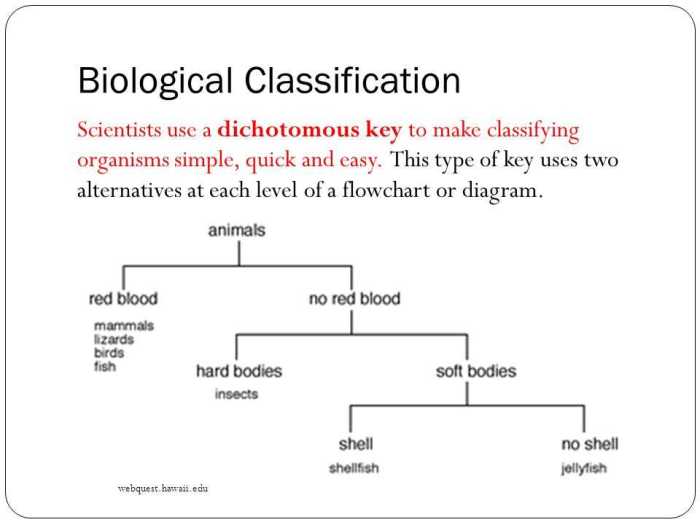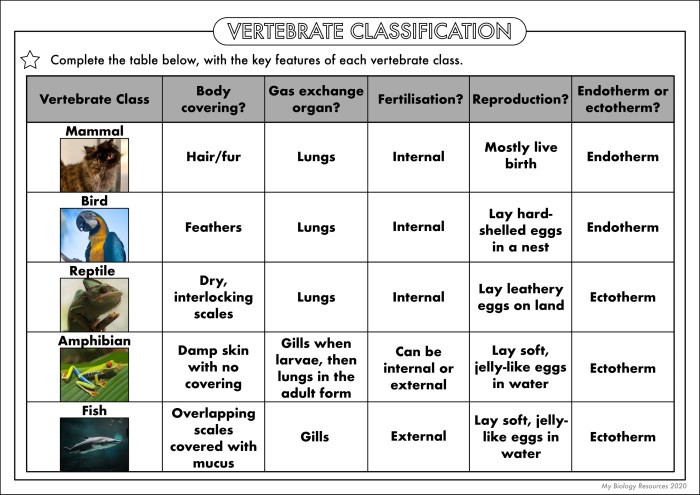Embark on an enlightening journey with our biological evolution and classification answer key, a comprehensive guide to understanding the intricate mechanisms and principles that govern the diversity of life on Earth.
This meticulously crafted resource delves into the fascinating world of biological evolution, unraveling the processes that shape the evolution of species over time. We explore the fundamental principles of classification, providing a systematic framework for organizing and understanding the vast array of organisms that inhabit our planet.
Biological Evolution

Biological evolution is the change in the heritable characteristics of biological populations over successive generations. These characteristics are the variations in physical or behavioral traits that are passed down from parents to offspring.
Evolution occurs when these heritable characteristics become more or less common in a population. This can happen through natural selection, genetic drift, or other mechanisms.
Mechanisms of Biological Evolution, Biological evolution and classification answer key
- Natural selectionis the differential survival and reproduction of individuals with favorable traits. Individuals with traits that make them better adapted to their environment are more likely to survive and reproduce, passing on their advantageous traits to their offspring.
- Genetic driftis the random change in the frequency of alleles in a population. This can happen due to chance events, such as the founder effect or the bottleneck effect.
- Gene flowis the movement of alleles between populations. This can happen through migration, breeding, or other means.
- Mutationis the random change in the DNA sequence. Mutations can create new alleles and introduce new genetic variation into a population.
Examples of Biological Evolution
- The evolution of antibiotic resistance in bacteria
- The evolution of peppered moths in response to industrial pollution
- The evolution of humans from ape-like ancestors
Classification of Organisms

Classification is the process of organizing and grouping organisms based on their shared characteristics. This helps us to understand the relationships between different organisms and to make sense of the diversity of life on Earth.
Levels of Classification
Organisms are classified into a hierarchy of levels, from the most general to the most specific:
- Domain
- Kingdom
- Phylum
- Class
- Order
- Family
- Genus
- Species
Principles of Classification
Classification is based on the following principles:
- Monophyly: A group of organisms is monophyletic if it includes an ancestor and all of its descendants.
- Paraphyly: A group of organisms is paraphyletic if it includes an ancestor and some, but not all, of its descendants.
- Polyphyly: A group of organisms is polyphyletic if it includes two or more ancestors and their descendants.
Examples of Classification Systems
- The Linnaean system of classification
- The phylogenetic system of classification
- The three-domain system of classification
Relationship between Biological Evolution and Classification

Biological evolution and classification are closely related. Classification is based on the assumption that organisms that share similar characteristics are more closely related to each other than to organisms that do not share those characteristics.
How Biological Evolution Influences Classification
Biological evolution can influence classification in the following ways:
- New species can arise through evolution. When two populations of the same species become reproductively isolated, they can evolve into separate species.
- Classification systems can change as our understanding of evolution improves. As we learn more about the evolutionary relationships between organisms, we may need to revise our classification systems to reflect those relationships.
Limitations of Classification Systems in Light of Biological Evolution
Classification systems have some limitations in light of biological evolution:
- Classification systems are based on a single moment in time. They do not take into account the fact that organisms are constantly evolving.
- Classification systems are not always able to reflect the full complexity of evolutionary relationships. For example, some organisms may have multiple ancestors.
How Classification Systems Have Changed over Time
Classification systems have changed over time as our understanding of biological evolution has improved. For example, the Linnaean system of classification, which was developed in the 18th century, was based on the assumption that all organisms were created by God and that they were immutable.
However, as scientists began to learn more about evolution, they realized that this assumption was incorrect.
Applications of Biological Evolution and Classification
Biological evolution and classification have a wide range of applications in fields such as medicine, agriculture, and conservation.
Medicine
- Understanding the evolution of pathogenscan help us to develop new treatments and vaccines.
- Classifying organismscan help us to identify new sources of antibiotics and other drugs.
Agriculture
- Understanding the evolution of crops and livestockcan help us to improve agricultural yields.
- Classifying organismscan help us to identify new sources of food and fiber.
Conservation
- Understanding the evolution of endangered speciescan help us to develop conservation strategies.
- Classifying organismscan help us to identify and protect biodiversity hotspots.
Ethical Implications of Using Biological Evolution and Classification
The use of biological evolution and classification has some ethical implications. For example, we need to be careful not to use this knowledge to discriminate against certain groups of people.
FAQ Guide: Biological Evolution And Classification Answer Key
What is biological evolution?
Biological evolution refers to the gradual change in the characteristics of a population over generations, driven by natural selection and genetic variation.
What are the key mechanisms of biological evolution?
Natural selection, genetic drift, gene flow, and mutation are the primary mechanisms that drive biological evolution.
How does biological evolution influence classification?
Biological evolution provides the basis for classifying organisms into different taxonomic groups, reflecting their evolutionary relationships and shared ancestry.
What are the limitations of classification systems in light of biological evolution?
Classification systems are limited by our current understanding of evolutionary relationships and may change as new evidence emerges.
How have classification systems changed over time as our understanding of biological evolution has improved?
Classification systems have evolved significantly over time, incorporating new insights from molecular biology and genetic analysis.
